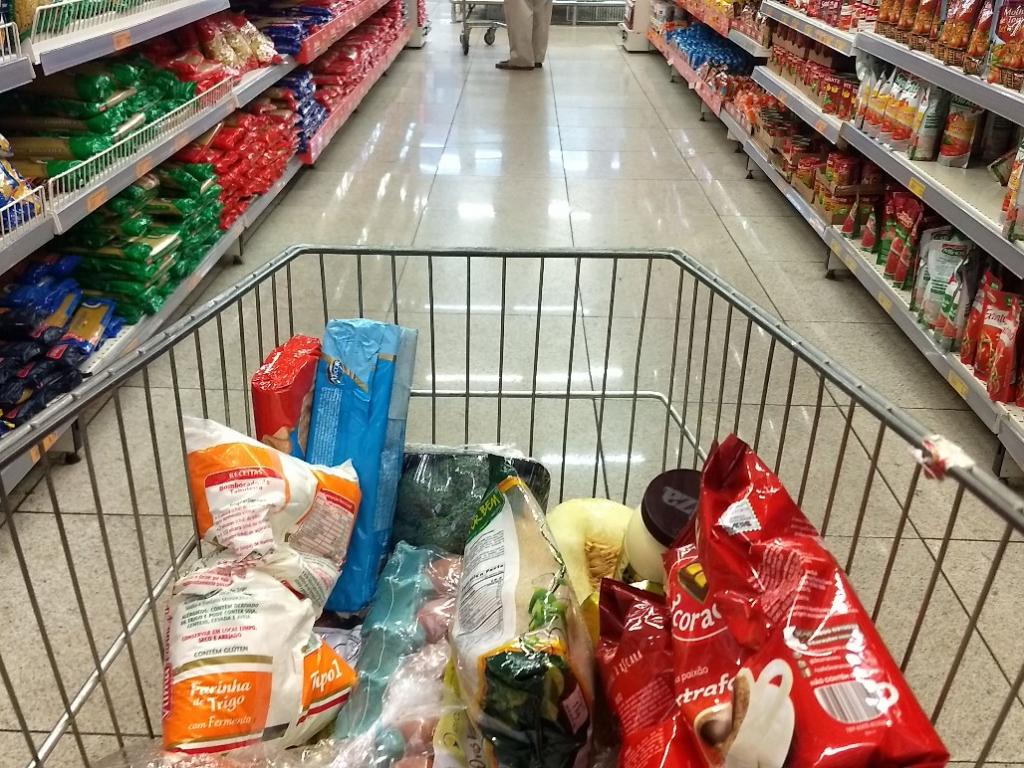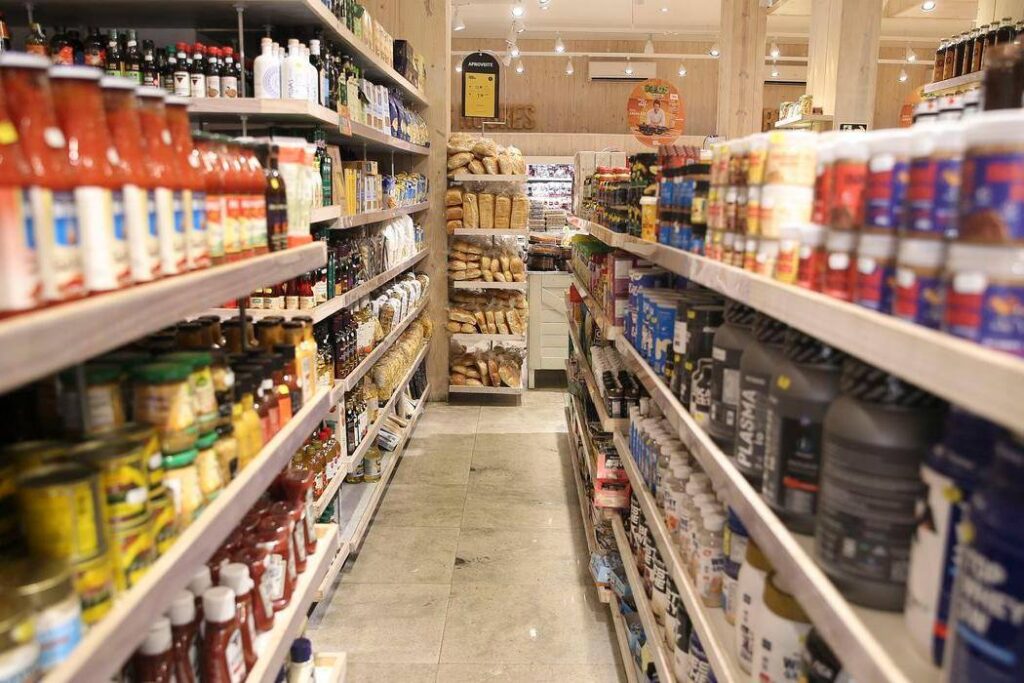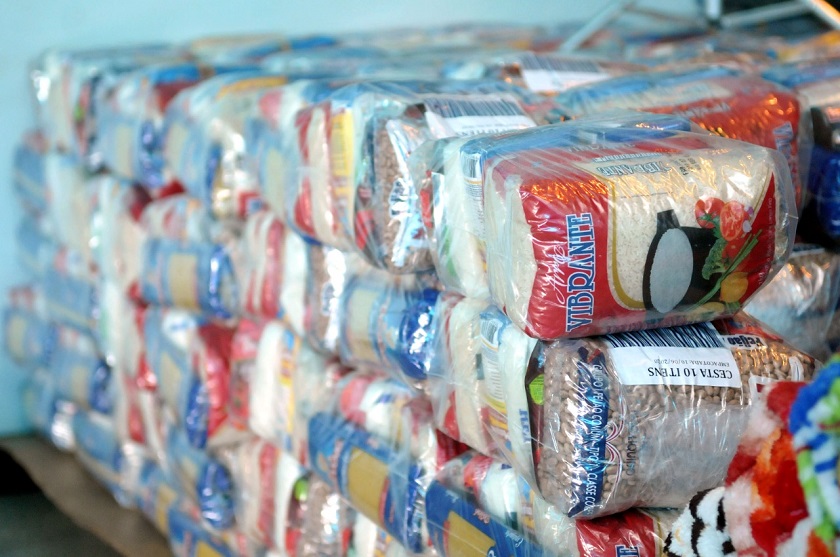Adverts
The basic food basket, an essential set of food and basic need items, represents an important pillar of support for families and individuals facing difficulties economic. This benefit, which has its historical roots in social concern and the guarantee of basic rights to nutrition and well-being, is more than just material aid; It is a symbol of solidarity and a vital mechanism for promoting social equality and combating poverty. However, despite its importance, many eligible people do not know how to access this vital resource.
The objective of this article is to provide a detailed and practical guide on how to request the basic food basket, covering everything from the eligibility criteria to the application process. The aim is to demystify the process, highlighting the necessary steps, the documents required and where to seek help. Furthermore, this article also aims to clarify the rights and duties of beneficiaries, offering insights into common challenges faced during application and how to overcome them.
Adverts
Through clear and direct information, this article seeks to empower individuals and families by providing them with the tools they need to access this essential support. Whether you are a person seeking this benefit or someone who wants to help others access it, the information presented here will serve as a reliable and comprehensive guide to navigating the food basket application process.

What is the Basic Basket?
A basic food basket is a set of food and basic necessities designed to meet the basic needs of an average family. Historically conceived as a measure of economic and social support, the basic food basket is a reflection of the commitment to guaranteeing food and nutritional security for populations in vulnerable situations. The composition of the basic food basket is meticulously selected to offer a balanced diet, covering the main food groups.
Adverts
The typical contents of a basic food basket include items such as rice, beans, flour, oil, sugar, salt, pasta, powdered milk, and other basic foods. Personal hygiene and cleaning items may also be included, recognizing the need to promote adequate sanitary conditions in addition to nutrition. These items are chosen not only for their ability to provide essential nutrition, but also for their long shelf life, ensuring that beneficiaries have access to safe food for an extended period.
It is important to note that basic food baskets may vary depending on the region. This variation takes into account differences in regional eating habits, the availability of local products and the specific nutritional needs of the local population. For example, in some regions there may be a greater emphasis on certain types of grains or fresh produce. This regional adaptation ensures that the aid offered is not only practical, but also culturally appropriate and nutritionally adequate.
Understanding what constitutes a basic food basket is fundamental to appreciating its value as a social support tool. By providing these essential items, the food basket plays a crucial role in ensuring that families can meet their most basic needs, promoting dignity and stability in times of difficulty.
Eligibility and Criteria for Requesting the Basic Basket
The basic food basket is a benefit designed to help families and individuals who are in a situation of economic vulnerability. To ensure that this assistance reaches those who need it most, there are specific eligibility criteria that must be met. These criteria vary depending on the region and the supplier entity, but generally include aspects such as family income, employment status and residence.
- Income and Residency Criteria: One of the main determining factors for eligibility is family income. Generally, families that fall into low-income brackets, defined by local or national standards, are eligible to receive the basic basket. Proof of income may be required through documents such as pay stubs, income tax returns or other official proof. Additionally, it is common for the benefit to be restricted to residents of certain geographic areas, such as specific municipalities or states, to ensure that resources are distributed efficiently and fairly.
- Special Situations: In addition to income, other circumstances may qualify individuals and families for the benefit. This includes situations such as recent unemployment, the presence of children, elderly people or people with disabilities in the family, and cases of emergencies or natural disasters. These conditions are considered to ensure additional support for those facing extraordinary challenges.
- Required Documentation: To request the basic food basket, it is essential to gather and present the appropriate documentation. This may include personal identification (such as ID and CPF), proof of residence, proof of income, and documents that attest to the special situation that justifies the need for the benefit (such as unemployment certificate, birth certificates of dependents, etc.). It is important to check with the provider entity which documents are required, as the lack of any of them may delay or prevent access to the benefit.
Understanding these criteria is the first step for anyone looking to request the basic food basket. Complying with the requirements and preparing the necessary documentation are key to ensuring a smooth and successful application process.
Basic Basket Request Process
Requesting the basic food basket is a process that may vary depending on the region and the organization responsible for distribution. However, there are common steps that applicants often need to follow. This segment details a typical procedure, providing a step-by-step guide that can be adapted to local specificities.
- Identification of the Distributing Body or Entity: The first step is to identify which organization is responsible for distributing the basic food basket in your area. This could be a government entity, such as the city hall or social services department, or non-governmental organizations and charities. In some regions, specific assistance programs may be responsible for this distribution.
- Gathering the Required Documentation: As mentioned previously, it is crucial to gather all the necessary documents. This includes personal identification, proof of residence, proof of income and, in some cases, documents proving the special status of the family or individual. Keeping all documents organized and ready for presentation will make the process easier.
- Completing and Submitting the Request Form: Generally, the applicant must complete an official application form. This form may be available online, on the responsible entity's website, or be obtained directly on site. The form must be filled out carefully, ensuring that all information is correct and complete.
- Request Submission: After filling out the form and gathering all the documentation, the next step is to submit the request. This can be done in person, at an office of the distributing entity, or online, depending on the options available.
- Monitoring and Waiting for Analysis: After submission, there may be a waiting period while the application is reviewed. During this time, it is important to stay informed about the status of the request and be available to provide additional information if necessary.
- Receipt of the Basic Basket: Once the request is approved, instructions will be provided on how and where to collect the food basket. It is important to follow all guidance provided and pay attention to distribution dates and locations.
This application process requires attention to detail and patience. While it may vary by location and entity, understanding these general steps helps prepare applicants for what to expect and how to navigate the process of obtaining this important social benefit.

Common Challenges in Requesting the Basic Basket
Requesting a basic food basket may present some challenges that, if known in advance, can be more easily overcome or resolved. This segment addresses common issues faced during the application process and offers tips for overcoming them.
- Problems with Documentation: One of the most common obstacles is the lack or inadequacy of necessary documents. This may delay the evaluation and approval process. To avoid such problems, it is essential to check the list of required documents in advance and ensure that they are all updated and in order. If you have any doubts about the validity or acceptability of a document, it is recommended to contact the entity responsible for distributing the basic food basket for clarification.
- Delay in Request Analysis: Another common difficulty is the delay in analyzing and approving requests. This delay may be due to the large volume of orders or internal bureaucratic processes of the distributing entities. To deal with this, it is important to be patient and regularly monitor the status of the request. If there is a significant delay, contacting the entity for progress information may be helpful.
- Tips to Avoid Delays: To minimize delays and ensure a more agile process, some tips can be followed:
- Advance Preparation: Gather all necessary documents well before starting the application process.
- Double Check: Before submitting your request, review all documents and forms to ensure there are no errors or missing information.
- Effective communication: Keep in touch with the responsible entity, whether to clarify questions or to monitor the status of your request.
- Search for Help: If you encounter difficulties, do not hesitate to seek help from community organizations or social services.
By being aware of these challenges and prepared to address them, applicants can navigate the application process with greater confidence and efficiency. It is important to remember that, despite these obstacles, the benefit of the basic food basket is a right guaranteed to those who need it, and efforts to obtain it are valid and important.

Rights and Duties of Basic Basket Beneficiaries
When receiving the basic food basket, beneficiaries have certain rights and duties that must be observed. It is important that individuals are aware of these aspects to ensure a transparent and fair relationship with distributing entities and to correctly take advantage of the benefit. This segment discusses the main rights and duties of basic food basket beneficiaries.
- Beneficiary Rights:
- Right to Clear Information: Every beneficiary has the right to receive clear and accurate information about the application process, including the eligibility criteria, the selection process and the frequency of distribution of the baskets.
- Right to Privacy and Respect: Beneficiaries have the right to have their privacy and dignity respected. This includes keeping your personal information confidential and ensuring respectful treatment throughout the process.
- Right to Quality Products: Beneficiaries have the right to receive basic food baskets that meet quality standards, with food and products that are safe and suitable for consumption.
- Duties of Beneficiaries:
- Appropriate Use of the Benefit: Beneficiaries must use the basic food basket for its intended purpose, which is to meet their family's basic needs. Improper use or resale of items received may lead to disqualification from the benefit.
- Information Update: It is the beneficiary's duty to keep their information updated with the distributing entity. Any change in your financial, residential or family situation must be communicated promptly.
- Compliance with Standards: Beneficiaries must comply with the rules established by the distributing entity, including deadlines for collecting baskets and respecting established procedures.
By knowing their rights and duties, beneficiaries can not only ensure that they receive the support they need, but also contribute to the efficiency and fairness of the food basket program. This mutual understanding between distributing entities and beneficiaries is fundamental to the success and sustainability of the program.
Conclusion
This article sought to provide a comprehensive overview of the basic food basket, highlighting its importance as a vital resource for families and individuals in situations of economic vulnerability. From identifying what constitutes a food basket, through eligibility criteria, to the detailed application process and common challenges faced, we sought to offer a practical and informative guide. Furthermore, we address the rights and duties of beneficiaries and illustrate the real impact of the benefit through concrete examples.
The basic food basket is not just a set of basic foods and products; it represents a fundamental support that promotes the dignity, food security and well-being of countless people. By understanding how to request this benefit, individuals and families can access an essential resource that is often the bridge to overcome challenging times.
It is important that information on how to access and request the basic food basket is disseminated widely, ensuring that those who need this support can receive it. We encourage everyone who finds themselves in difficult situations to seek this benefit and we also encourage the community to get involved, whether by sharing information or supporting local food basket distribution initiatives.
Finally, we remember that solidarity and mutual support are fundamental in our societies. Initiatives like the food basket not only alleviate the immediate burden of food insecurity, but also strengthen community bonds and collective compassion. We hope this article serves as a valuable resource for those seeking assistance and those who want to help others in their communities.
